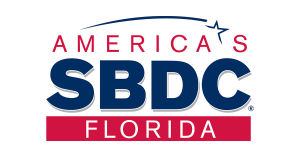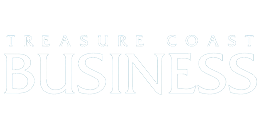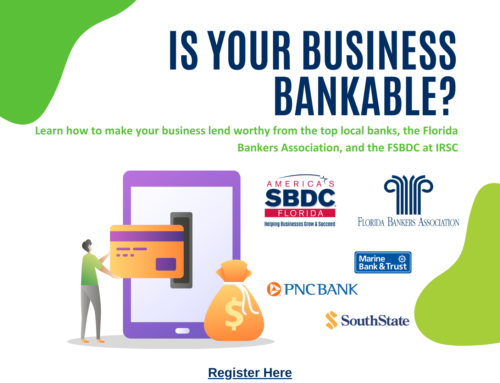There are loan options for small businesses but they can be expensive
BY TY KIISEL
I think it’s safe to say the Paycheck Protection Program wasn’t a good fit for every small business looking for capital. What’s more, the Small Business Administration loan is not the only source of financing options available. A savvy business owner can leverage the loan options that are available to maintain business operations, grow revenue and exit the current financial crises a little bruised and battered, but none the worse for wear.
 The technicolor world of financing in 2019 is a little more monochromatic today. With many lenders pulling back or tightening their credit thresholds there are fewer options available for small businesses to access borrower capital. Business credit cards, which I have long felt were a good way for new businesses to establish business credit, are available but primarily for the most creditworthy borrowers. Business owners should expect their business lines of credit to shrink and the possibility of obtaining a new line of credit to dry up, at least for the rest of 2020.
The technicolor world of financing in 2019 is a little more monochromatic today. With many lenders pulling back or tightening their credit thresholds there are fewer options available for small businesses to access borrower capital. Business credit cards, which I have long felt were a good way for new businesses to establish business credit, are available but primarily for the most creditworthy borrowers. Business owners should expect their business lines of credit to shrink and the possibility of obtaining a new line of credit to dry up, at least for the rest of 2020.

Katherine Culhane’s background includes a long career in banking including roles in management, business development, commercial lending and private banking. She has a master’s degree in Organizational Learning and Leadership, is a Certified Professional Behavioral Analyst and is a SHRM Senior Certified Professional with the Society of Human Resources.
Business term loans are still available for some but there are lenders who are pulling back entirely — at least for the short term.
The upcoming famine of financing puts us in a position to consider those options that traditionally re-enter a market like this first, some of which will come at a premium. But frankly, that’s why they can re-enter the market now, rather than waiting for eight or 10 months from now. Some of these lenders are often willing to work with borrowers who find themselves with less-than-perfect credit, a shorter track record and smaller annual revenues — the very businesses that will need a little extra capital to keep their businesses afloat. Particularly in times like these, there is a direct correlation to access and cost that every small business needs to be aware of.
If you didn’t get a PPP loan or you need a little extra capital to fund business needs not covered by the forgiveness requirements of a PPP loan, here is a list of a few of the financing options still available today outside of the SBA.
MERCHANT CASH ADVANCE
A merchant cash advance isn’t really a loan, but rather an advance based upon the credit card sales that flow through a business’ merchant account. If you’ve heard that MCAs are expensive, you’ve heard right. Interest rates are very high. Depending on the provider, they can be triple-digit high, which is why under normal circumstances, I wouldn’t recommend them. Nevertheless, a business owner can apply for an MCA and have funds deposited into a business checking account fairly quickly — sometimes as quickly as 24 hours after an application is approved.
MCA providers don’t evaluate credit risk the same way a more traditional lender would. They are primarily concerned with the daily volume of credit card transactions flowing through the business to determine if there is enough cash flow for a borrower to support the periodic payment. In addition to a higher interest rate, in terms of periodic payment, you should expect a daily direct debit from your merchant account. So if you do a lot of credit card transactions every day, a merchant cash advance could be an option to consider.
What is an MCA holdback?
The language of an MCA is also a little different from that of a traditional loan. In addition to terms like interest rate, term and periodic payment, there is something called a holdback. In terms of an MCA, the term holdback refers to the percentage of daily credit card sales debited from your account and applied to your advance. The holdback percentage (usually between 10 percent and 20 percent) is typically fixed until the advance is paid in full.
It’s easy to confuse the interest rate you’re being charged for the advance and the holdback amount. The holdback is the daily draw from your account until the advance (including the agreed-upon interest) is paid in full. So holdback applies to your daily payment while the interest rate, which is typically a factor rate, is the cost of the financing.
For example, if you borrow $10,000 at a factor rate of 1.5 ($10,000 x 1.5 = $15,000), the cost of borrowing the $10,000 would be $5,000, plus any fees the provider may charge in addition to the factor rate.
If the holdback percentage was 15 percent and $5,000 was deposited into your merchant account today, your payment for today would be $750. If you received $8,000 in your merchant account tomorrow, your daily payment would be $1,200.
Does an MCA make sense?
Although there are many small business owners who successfully leverage MCAs on a regular basis, I can only recommend one-use case. Because of the high cost, using an MCA to fund an initiative with a defined return of investment big enough to support the extra expense, provided the borrower factors in the cost of the MCA into the cost of goods sold, an MCA can successfully be used to help the business grow profits. I cannot recommend an MCA to meet day-to-day cash flow or working capital needs.
Additionally, a practice known as stacking multiple MCAs on top of each other is not a good practice and puts your business in tremendous financial jeopardy. The use of two or three of these very high-interest products has forced bankruptcy and closed the doors of more than one small business since MCAs were introduced 20 or so years ago.
EQUIPMENT FINANCING, LEASING
In terms of equipment financing, any tangible asset, other than property or a building, used in the operation of a business may be considered equipment. For example, desks, computers, a pizza oven, a dental X-ray machine and construction equipment are all considered business equipment and can be either purchased with an equipment loan or leased.
Because the equipment you are purchasing is considered collateral, there are equipment lenders approving small business owners right now.
Leasing is similar to borrowing, however it’s the leasing company that owns the asset and rents it back to you for a monthly fee — sometimes with a lower payment than a loan would be. Most leases come with a fixed interest rate and terms that can vary depending on the leasing company. At the end of the lease, you may also be able to purchase the equipment at fair market value or a predetermined amount depending on the lease.
Equipment financing can come from a variety of sources depending on your credit worthiness and the nature of the equipment being purchased. Commercial banks, credit unions, online lenders and even the SBA can all offer equipment loans.
Terms will vary depending on the lender, but commercial equipment loan terms typically max out at seven years with interest rates that will vary depending on the lender and your credit profile.
Does equipment financing make sense?
I like this type of financing because it allows a business owner to spread the cost of expensive equipment over the useful life of the asset, making it possible to free up capital for other cash flow or working capital needs. If you are looking for financing to fund the purchase of anything that could be considered equipment, this is one of the better financing options still available today.
FACTORING
This is another source of capital that is technically not a loan, but rather an advance on the value of your accounts receivable. It also has a long history. Medieval businessmen and English colonists all used factoring. Online factoring has made it more accessible to small businesses looking for quick and simple access to capital to meet business needs.
A factor is a third party that is willing to purchase part or all of your company’s accounts receivable at a discount. The factor then owns the outstanding invoices and collects from your customers. The factor profits from the difference between the discounted rate negotiated to buy the receivables and the full amount collected from the customer.
The factor is primarily interested in the credit history of your customers. Do they pay their invoices on time? With that in mind, it will likely want to review your customer’s payment history before it makes an offer. There is no standard factoring arrangement, so you should expect to negotiate the rate with your factoring company. You can expect it will offer to pay 85 percent or 90 percent of the value of your receivables and advance a percentage of that amount with the balance being paid once it receives payment from your customers. There may also be fees associated with the arrangement, so make sure you understand what they are.
Most factors work in specific industries, so when looking for a factor make sure they work in the industry you do. Any fees will be based upon variables like the credit quality of your customers, the size of the invoices and the industry you’re in.
Most factoring arrangements are recourse factoring. If your customers don’t pay their invoices to the factor, you will be expected to pay any invoice they were unable to collect.
Nonrecourse factoring is when the factoring company assumes all the risk for uncollected invoices. These arrangements are the exception and often come with additional fees to mitigate the risk of uncollected invoices.
Does factoring make sense?
Factoring makes sense for a lot of businesses that offer payment terms to their customers. It’s been a favored method of acquiring capital in the textile industry for many, many years, for example.
If you are a baker, for another example, and you provide croissants and éclairs to all the big hotel chains in your city and they pay you from an invoice, factoring could work for you. On the other hand, if you own the corner bakery and you cater primarily to a walk-in trade, a factor will likely not be a viable option for you.
NONPROFIT MICRO LENDERS
Nonprofit micro lenders fill a niche for many small businesses that might not otherwise qualify for a loan with a more traditional lender. Nonprofit lenders tend to focus on smaller loan amounts of under $50,000 (what is defined as a micro loan by the SBA) or even smaller amounts like $5,000 or $10,000.
These lenders typically have very low and sometimes even no-interest loans for the borrowers that meet their criteria. Many of these lenders also offer services like mentoring, workshops and other services.
Some communities also offer micro loans to support community development initiatives and are looking for small businesses that can leverage a relatively small amount of capital into opportunities to create jobs and contribute to community growth.
Many restaurants, small merchants, and other businesses you might associate with Main Street can benefit from this type of financing — depending on the size of the business and where the business is located. These lenders typically serve the smaller small businesses that don’t get much attention from bigger banks.
Does a nonprofit lender make sense?
If you are a small business that can leverage a relatively small loan amount into a big impact, this could be a good fit for you and your business. The smallest small businesses, particularly those in developing communities that aren’t often served well by traditional for-profit lenders, are a good fit for these nonprofit lenders. If this describes your business, they could be a good fit for you.
To take advantage of the loan options available today, small business borrowers need to be savvier about where they apply, what they use the financing for, and the lenders they choose. Although they don’t have to be small business financing experts, they do need to become experts in the financing that best suits their needs.
Through the rest of 2020, borrowers with less-than-perfect credit histories will have the hardest time accessing borrowed capital but there are options available. They will just be more expensive and will have less favorable terms. Some of the traditional sources of borrowed capital are still on the table for borrowers with great personal credit scores and business credit histories beyond reproach, but if you have a personal credit score of 600 and a spotty business credit profile you aren’t going to meet the criteria.
PLEASE NOTE
The material contained in this article is for informational purposes only, is general in nature, and should not be relied upon or construed as a legal opinion or legal advice. Please keep in mind this information is changing rapidly and is based on our current understanding of the programs. It can and likely will change.
Although we will be monitoring and updating this as new information becomes available, please do not rely solely on this for financial decisions. We encourage you to consult with your lawyers, certified public accounts and financial advisers.
See the original article in the print publication
Treasure Coast Business is a news service and magazine published in print, via e-newsletter and online at tcbusiness.com by Indian River Magazine Inc. For more information or to report news email staff@tcbusiness.com

